Stories from the Soho Road
After Khalid Masood’s attack on Westminster last week, both Birmingham and Islam were singled out for critical comment in some of the nation’s press – Birmingham being once again branded the UK’s prime jihadist recruitment centre, and Islam criticised for its callousness, as evidenced by the photograph of a young Muslim woman walking past one of the victims with apparent disregard. Jamie Lorriman, who took the photo, felt he had to defend the young woman against those who had used his photo to further an anti-Islam agenda, clarifying the context and drawing attention to her obvious distress. And Tariq Jahan, hero of the hour in the 2011 riots in Birmingham, gave an equally stout defence of his home city, drawing particular attention to its cultural cohesion, the very quality some of the press had claimed it lacked.
Against this background, Liz Hingley’s blog feels particularly timely. Born in Birmingham, she documents her birth city’s multi-faith communities with understanding and affection, projecting the power of religion to build bridges rather than to burn them. For more information of Liz’s work, see the links at the end of her piece.
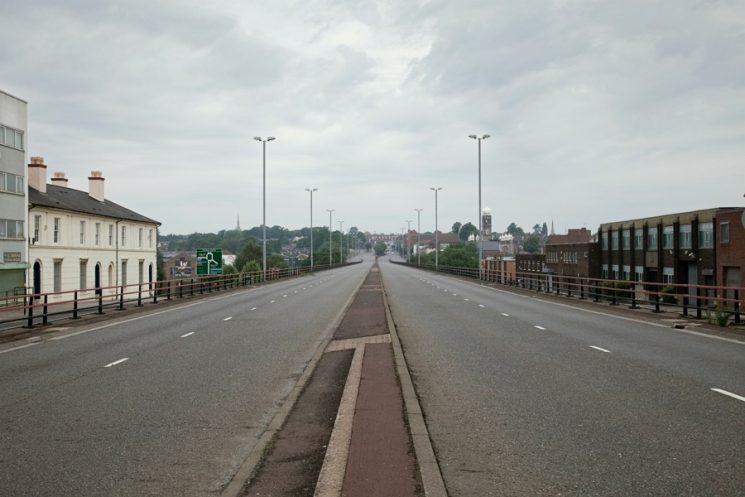
The flyover leading from Birmingham city centre to the two-mile stretch of Soho Road. The area has one of the highest immigration and also poverty rates in the city. © Liz Hingley
Under Gods
Growing up in Birmingham, one of the UK’s most culturally diverse cities and home to citizens of more than 90 different nationalities, I was the only white British girl in my nursery class. I ate sweet Indian treats at friends’ birthday parties and attended Sikh festivals in the local park. After travelling abroad and living in other cities, I became aware of the particularity of my upbringing. I developed an interest in the growth of multi-faith communities in European inner cities, and the attendant issues of immigration, secularism and religious revival.
Between 2007 and 2009, I explored the two-mile stretch of Soho Road in Birmingham – the site of some 30 religious centres – documenting and celebrating the rich diversity of religions that co-exist there, and the reality and intensity of their different lifestyles. I lived with and visited the different religious communities, including Thai, Sri Lankan and Vietnamese Buddhists, Rastafarians, the Jesus Army evangelical Christians, Sikhs, Catholic nuns and Hare Krishnas. The lively bus journeys along Soho Road on a Sunday were always insightful. They took Christian individuals to church congregations meeting in a tent in the local park or a school gym hall. Converted Iranian evangelical Jesus Army members in multi-coloured camouflage print outfits could be found sitting next to large decorative hats adorning Jamaican born ladies. On the same bus I would hear Muslim girls sitting at the back talking loudly about the latest fashions of the veil, while I chatted to Hare Krishna devotees on their way to central Birmingham to distribute books.
Under Gods: Stories from the Soho Road is a result of my own journey along Soho Road. What I was aiming to do with this intimate documentation was to show the significance and influence of religious identity in the city and how belief transforms urban spaces from the ordinary to the extraordinary. Under Gods investigates the power of what the people on the street believe their religion to be rather than what is prescribed by religious leaders or by the texts, as faiths are interpreted differently within each context of encounter between persons, places and objects. As a South Asian female Anglican priest said:
On Soho Road people are conscious of their faith rather than where they came from. People used to say ‘Oh I am from Bangladesh, Pakistan, West Indies or Poland.’ Now people say ‘I am a Muslim, I am a Sikh, I am a Baptist, I am a Catholic; this is my identity.’
At a time when religion can breed unnecessary fear and prejudice through misunderstanding, I hope that Under Gods reveals and celebrates the power of faith to form identity and to unify communities in contemporary inner-city life.
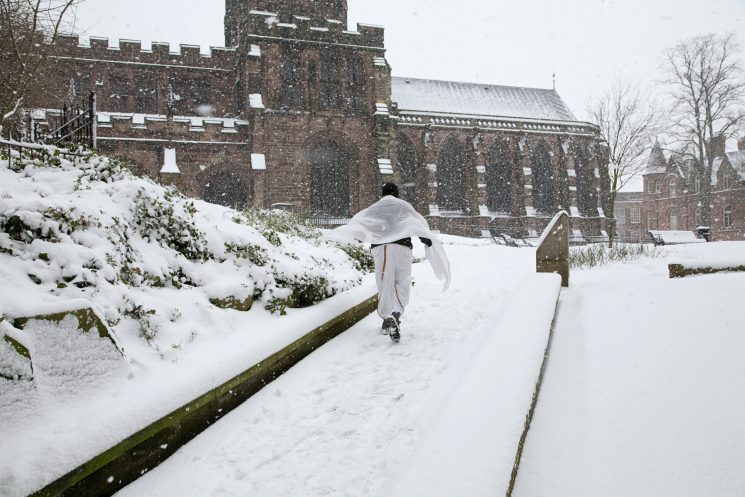
Hare Krishna book distribution outside a parish church – a Brazilian-born Hare Krishna devotee hands out flyers on a December morning and invites people for dinner at the Soho Road temple. At the age of twenty he left his native Brazil to preach about Krishna throughout Europe. © Liz Hingley
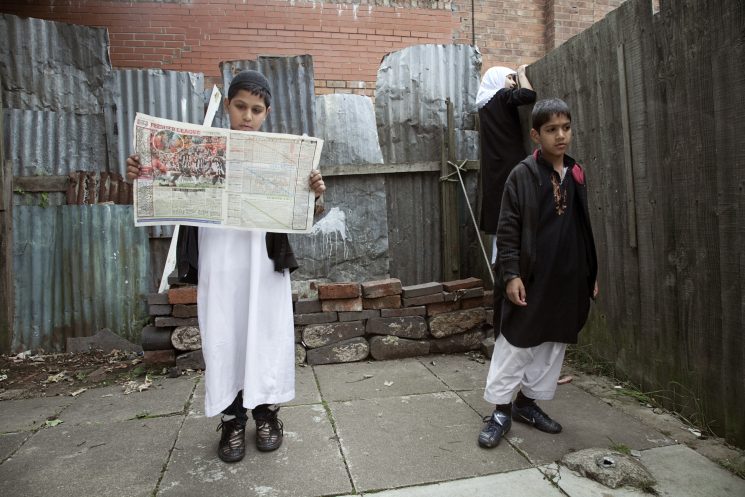
The Premier League – Muslim children in the backyard of their terraced house. Their formal Islamic dress is only worn for their daily after-school mosque class. The eldest boy checks the football results in the local paper; his sister speaks with their neighbour, a Jehovah’s Witness, over the fence. © Liz Hingley
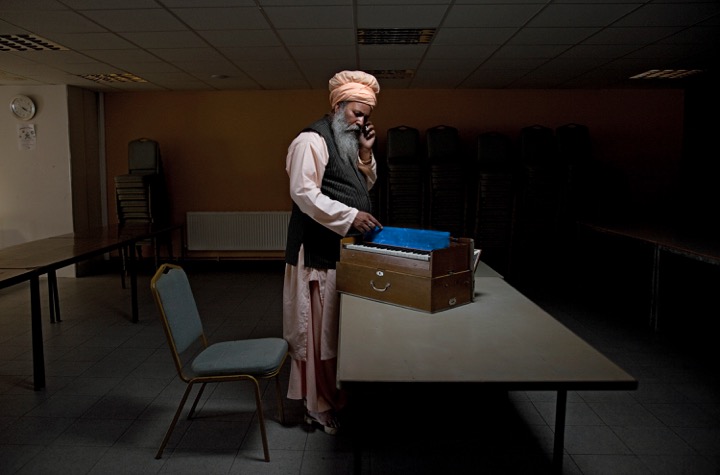
The visitor from India – a Sikh priest visits a Gurdwara on Soho Road. He regularly receives calls on his mobile phone from contacts in India. He speaks no English. © Liz Hingley
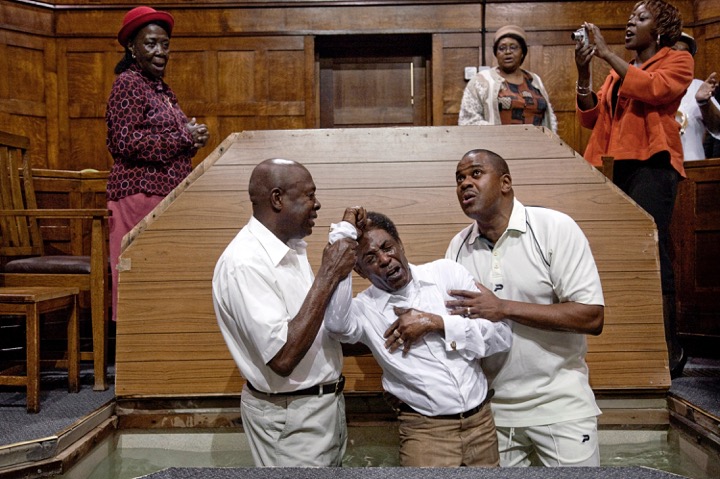
The biannual baptisms are an important occasion for the primarily black congregation at Cannon Street Baptists. During the service the baptism pool is uncovered and the pastor, supporter and person to be baptised enter into the water. © Liz Hingley
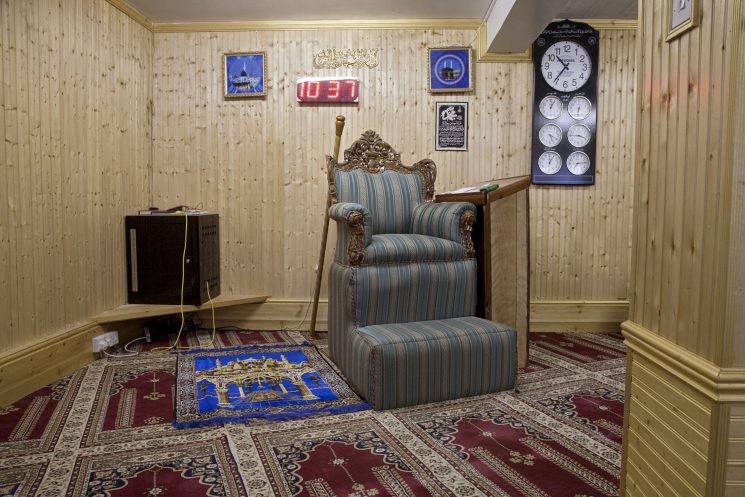
Minba Chair, Pakistani mosque – a terraced house converted into a Pakistani mosque. The Minba chair, a replica of that used by Muhammad, was made by the Sikh carpenters down the road. © Liz Hingley
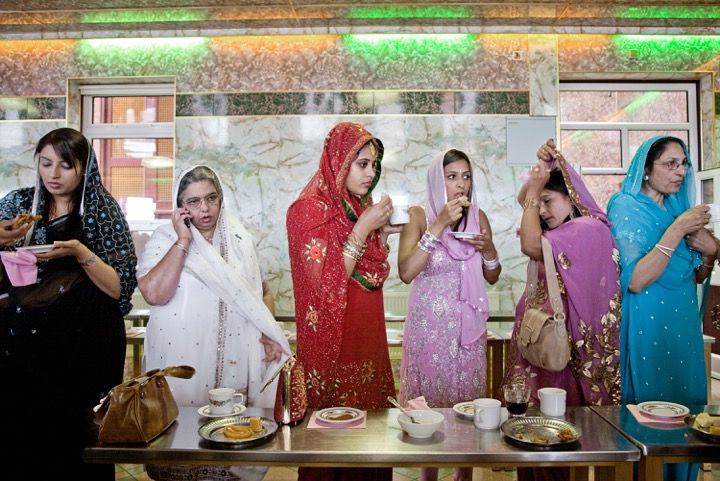
A wedding party eats in Nanak Nishkam Gurdwara, the largest and wealthiest of five Gurdwaras on Soho Road. The temple bustles twenty-four hours a day with visitors praying and women making food in the vast kitchens, which distribute hundreds of free langarunga meals. © Liz Hingley
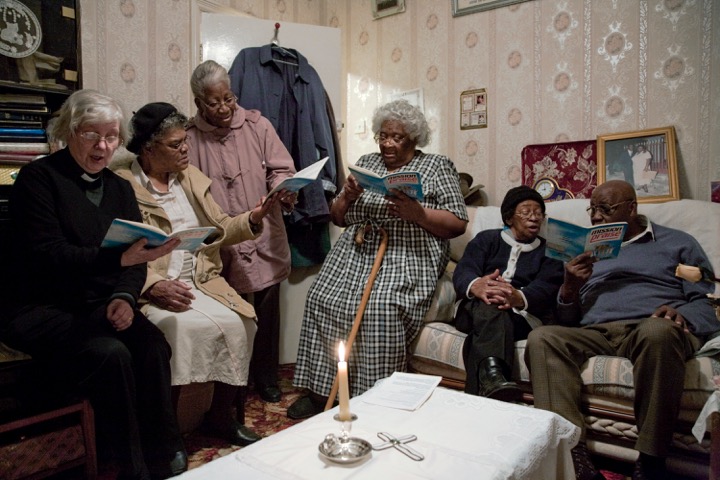
Old age and poor health means Mrs Little is no longer able to attend the church of St Andrews on Soho Road. The Anglican priest celebrates communion in her front room every week with friends from the church. © Liz Hingley
Liz Hingley is a British photographer and anthropologist whose work bridges academic scholarship and artistic practice. She is currently an Honorary Research Fellow of the Department of Theology and Religion at the University of Birmingham. Under Gods, the project on which this blog is based, may be viewed on her site.


Leave a Reply